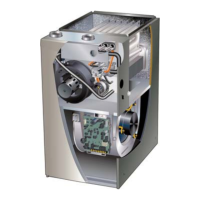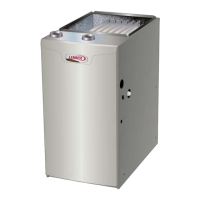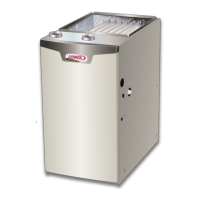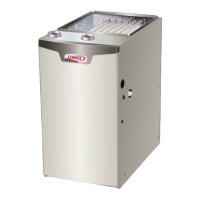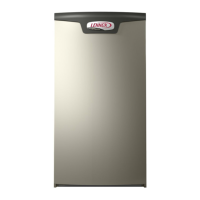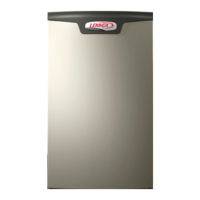Page 14
Venting Pracitces
* See table2 for allowable pipe.
Piping Suspension Guidelines
NOTE - Isolate piping at the point where it exits the outside wall o
roof in order to prevent transmission of vibration to the structure.
SCHEDULE 40 PVC --
Support every 5 feet.
All other pipe* --
Support every 3 feet.
Wall
edistuoedisni
24” maximum
3/4” minimum
Wall Thickness Guidelines
FIGURE 16
If replacing a furnace which was
commonly vented with another gas appliance, the size
of the existing vent pipe for that gas appliance must be
checked. Without the heat of the original furnace flue
products, the existing vent pipe is probably oversized for
the single water heater or other appliance. The vent
should be checked for proper draw with the remaining
appliance.
REPLACING FURNACE THAT WAS PART OF A
COMMON VENT SYSTEM
CHIMNEY
OR GAS
VENT
(Check sizing
for water
heater only)
FURNACE
(Replaced)
WATER
HEATER
OPENINGS
(To Adjacent
Room)
FIGURE 17
1 - n areas where piping penetrates joists or interior
walls, hole must be large enough to allow clearance
on all sides of pipe through center of hole using a
hanger.
2 - When furnace is installed in a residence where unit
is shut down for an extended period of time, such
as a vacation home, make provisions for draining
condensate collection trap and lines.
Exhaust Piping (Figures 19 and 21)
Route piping to outside of structure. Continue with instal-
lation following instructions given in piping termination
section.
WARNING
Carbon Monoxide Poisoning Hazard
Cutting or altering exhaust or air intake pipes, which
are located in the blower compartment, could result
in Carbon Monoxide Poisoning or Death.
CAUTION
Do not discharge exhaust into an existing stack
or stack that also serves another gas appliance. If
vertical discharge through an existing unused stack
is required, insert PVC pipe inside the stack until the
end is even with the top or outlet end of the metal
stack.
CAUTION
The exhaust vent pipe operates under positive
pressure and must be completely sealed to prevent
leakage of combustion products into the living
space.
Vent piping Guidliens
NOTE - Lennox has approved the use of DuraVent® and
Centrotherm manufactured vent pipe and terminations
as an option to PVC. When using the PolyPro® by Du-
raVent or InnoFlue® by Centrotherm venting system the
vent pipe requirements stated in the unit installation in-
struction – minimum & maximum vent lengths, termination
clearances, etc. – apply and must be followed. Follow the
instructions provided with PoyPro by DuraVent and Inno-
Flue® by Centrotherm venting system for assembly or if
requirements are more restrictive. The PolyPro by Du-
ravent and InnoFlue by Centrotherm venting system must
also follow the uninsulated and unconditioned space crite-
ria listed in table 9.
The SLP98DFV is installed only as a Direct Vent gas
central furnace.
NOTE - In Direct Vent installations, combustion air is tak-
en from outdoors and ue gases are discharged outdoors.
Intake and exhaust pipe sizing -- Size pipe according to
tables 6 and 7. Count all elbows inside and outside the
home. Table 6 lists the minimum vent pipe lengths per-
mitted. Table 7 lists the maximum pipe lengths permitted.
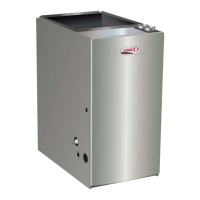
